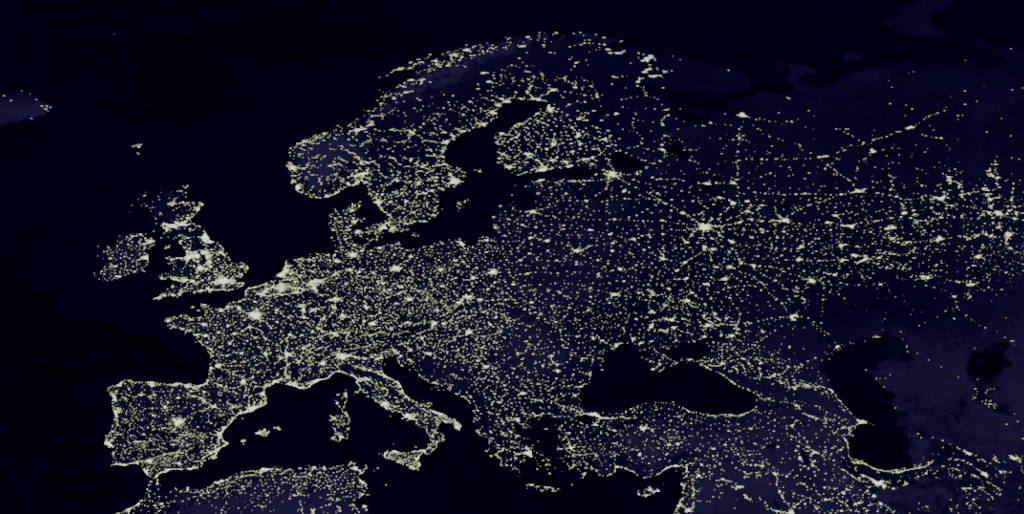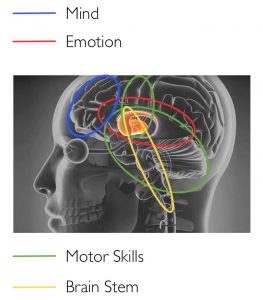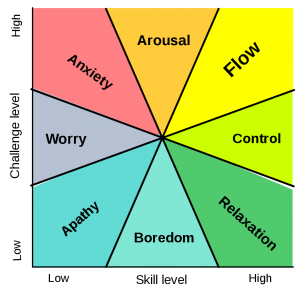In the first article about “The brain and the images” we talked about the meaning of the inner images and the networking of the brain.
In this article we will now build a bridge to the connection between physical exercise, our “thinking” and the different areas of our brain involved.
When we talk about “the brain”, we must be aware that although the rough structure of the brain is the same for every human being, each of us has our own individual “network”. Everyone is a unique personality with unique experiences, abilities, problems and weaknesses.
To illustrate this, one can imagine the human brain as the European continent. The brain regions are the cities, villages and scenic features. What now makes up our “personality” is the individually differently developed road network. Some places are connected with highways in one case, in another only with trampling.
In addition, individual experiences and “habits” have led to certain connections being blocked for some people, e.g. through trauma (whereby according to my definition this includes every experienced helplessness), or illness.
When we talk about “the motor function” we have to distinguish between two different types of motor function. Very simplified, this is the so-called “voluntary motor function” and the so-called “involuntary motor function”.
The former is the type of movement that our mind initiates, for example, to grab a cup of coffee or to type these letters on the keyboard. The latter serves, among other things, to stabilize the body.
Whenever I perform a movement on purpose, my mind “tells” a region further “back” in the cerebral cortex which movement program it should now call up. Next, this region then “discusses” this wish with a department below the cerebral cortex, the basal ganglia.
This part of the brain is a very important switch point between “our mind” and the rest of the brain, because it is connected to many parts of the brain and is involved in many brain processes.
It is an important part of the “emotional system” (and is therefore also involved in the experience and processing of emotions and learning) and has connections to the brain stem where vital bodily functions are controlled.
Now that the basal ganglia have received the wish of the mind and discussed/adjusted with the emotional department, details will be compared with the brain stem (and above that with the cerebellum, but more about this later) and then the result of this “conference of instincts” will be reported back to the mind. But before this result is reported back to the mind, it must be modified in another conference. The thalamus.
There are the governing bodies of various departments of the body, such as memory, body perception, hearing, seeing, and involuntary motor skills.
This management department then discusses the matter further, adapts it and then sends a copy of the result to the mind and gives the commands to the executive organs of the cerebral cortex where the corresponding muscle commands are then given.
The command centre of our involuntary motor activity, which serves, among other things, to prevent us from falling over and to maintain our body tension, lies in the cerebellum. This brain region is located “at the back” below our cerebrum and looks like two walnuts glued to the brain stem. It accounts for only one tenth of the weight of our brain, but contains 4/5 of all brain cells. This distribution alone shows how important this brain area is for us humans.
In the cerebellum all information of the locomotor system converges. This is where the information about the state of tension of the muscles and tendons arrives, the information about the position of the joints and information from the equilibrium organ of the head.
At the same time, copies of the muscle commands from the cerebral cortex are registered there in real time and various pieces of information from the brain stem are processed.
This command centre has communication channels to the thalamus where its information is transmitted to the cerebrum and where voluntary motor commands are worked out with the help of this information. However, it also has channels to the brain stem, and therefore directly to the muscles, to react quickly and instinctively to situations by moving the body reflexively or unconsciously “balancing” it.
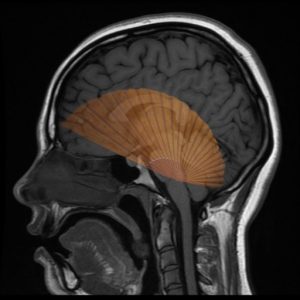 As we have seen, the brain stem is also involved in all processes. This is also absolutely logical, because it is the oldest and most important part of our brain. Here things like our breathing and the heartbeat are regulated, here all the information about our body condition comes together, here the cerebellum exchanges with the eyes, the ears and the sense of balance, here the breathing and swallowing muscles are controlled and our eye muscles are coordinated. This is where our emotional experience is coordinated with all the above-mentioned functions.
As we have seen, the brain stem is also involved in all processes. This is also absolutely logical, because it is the oldest and most important part of our brain. Here things like our breathing and the heartbeat are regulated, here all the information about our body condition comes together, here the cerebellum exchanges with the eyes, the ears and the sense of balance, here the breathing and swallowing muscles are controlled and our eye muscles are coordinated. This is where our emotional experience is coordinated with all the above-mentioned functions.
The brain stem can communicate its weighty opinion to the mind through various channels. It is located in the thalamus, influences the switchboard of the basal ganglia and has a permanent seat in the command centre of the cerebellum. His commands go directly to the muscles and intestines and his opinion is binding for the mind.
If the brain stem feels that the mind cannot solve a situation quickly enough, it takes control itself and puts the mind on the “substitution bench”. It is the instinct center that I talked about in the article about “The brain and the images” when it was about the Tiger and “Fight, Flight, Freeze”. He is also the one who controls alertness and attention.
So we have our mind, the basal ganglia, the command center of the cerebellum, the emotional centers, the memory, the thalamus command center and the all-connecting brain stem as the survival instance. These are the major cities on the map of the brain.
All these cities are connected to each other and of course they all have a road network themselves. We have already explained that our brain is constantly expanding this road network and is also building it back again, as needed. It is, in this respect, like a muscle: What you often use gets bigger and stronger.
From the distribution of nerve cells in the brain, we can see that our motor system plays a very large and important role (we remember: 4/5 of all brain cells!). Of course this also makes sense, because we have to move permanently in our environment and interact with it. However, only a very small part of the information from our muscles, bones and tendons is fed back to our mind, i.e. we only take a very small part of our body information consciously.
The best way to imagine this is to use a computer. We do not need to know the program code of the operating system or the browser we use to read these lines. We don’t need to know the processor architecture that powers the computer, or all the stations that bring the information on this website to your screen, let alone its internal structure.
What is important is the information on the screen, it is what we work with. It is the same with our mind. It does not have to know all the information, it only has to work with the results of this information.
Our body has many possibilities to influence our motor system on a subconscious level. From our emotional centres, excitations permanently arrive in the involuntary switching centres, e.g. in the brain stem. Our basal ganglia are also permanently subject to double and triple stresses, as they have to cope with emotions, mind and learning and also report to the brain stem and thalamus, while also playing a major role in the execution of movements. We don’t notice any of these processes that take place under the surface, because “we” are busy with “more important” things (e.g. reading this text or drinking coffee).
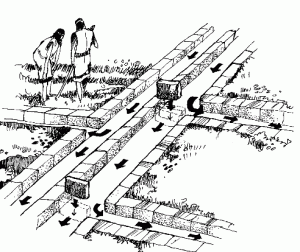 But now our road networks in the brain are not equally well developed everywhere. There are, based on our experiences, bottlenecks, dead ends, motorways and trails. Especially the roads of our body perception are often very poorly developed, precisely because our body does a lot instinctively and we use our brain for other things than to move consciously (attentively). Due to a permanent permanent fire from the emotional centres and the demands of our mind, the information from our body often gets lost and does not find attention. The brain stem and the cerebellum control the muscle tension autonomously and do not “bother” the mind with more precise details. However, the price for this is a dismantling of the corresponding road network.
But now our road networks in the brain are not equally well developed everywhere. There are, based on our experiences, bottlenecks, dead ends, motorways and trails. Especially the roads of our body perception are often very poorly developed, precisely because our body does a lot instinctively and we use our brain for other things than to move consciously (attentively). Due to a permanent permanent fire from the emotional centres and the demands of our mind, the information from our body often gets lost and does not find attention. The brain stem and the cerebellum control the muscle tension autonomously and do not “bother” the mind with more precise details. However, the price for this is a dismantling of the corresponding road network.
By using images to control movement, I now use many streets in my brain at the same time, especially when I try to perceive all parts of my body and move them harmoniously. For example, I do not only want to lift my arms, but I want to create a feeling in my whole body, as if I am standing under water and the buoyancy of the water moves my arms upwards, while my whole body is moved by the proper movement of the water and has to balance itself.
An idea enables me to access the otherwise unconscious information of the body tension and to change and adapt it with the help of corresponding images by moving consciously and in a very difficult and finely graded way. Since the best way to develop the streets is to use them often, this should be done with a high repetition rate.
By using images and movement to enhance the body’s perception, I am expanding my road network between cities, but also within cities. I am improving my entire brain infrastructure. An idea/image excites all cities, and their streets, in the brain through the street network. From space, seen in darkness, all the streets of Europe would shine through the cars driving on them.
 Now there is the phenomenon of “combined excitation patterns”. If I make a certain number of villages and towns shine through an idea, i.e. use the road network there, then I develop these roads. If I now take another idea, which also makes a certain road network shine, and couple it with the previous idea, then all of a sudden considerably more roads will shine and thus be better developed. I have expanded the network. In the end it doesn’t matter in which city the idea is born, through the road network it spreads out on all roads and reaches all connected villages and cities.
Now there is the phenomenon of “combined excitation patterns”. If I make a certain number of villages and towns shine through an idea, i.e. use the road network there, then I develop these roads. If I now take another idea, which also makes a certain road network shine, and couple it with the previous idea, then all of a sudden considerably more roads will shine and thus be better developed. I have expanded the network. In the end it doesn’t matter in which city the idea is born, through the road network it spreads out on all roads and reaches all connected villages and cities.
These combined excitation patterns suddenly connect brain regions to the road network that I might not have been able to reach before, or only with difficulty. The better the infrastructure the more effective the transport routes.
The goal of the training in the Chinese martial arts is to get a well developed road network. Between the cities and in the cities and villages of the brain. Thereby I can try to use the whole potential of the human mind and develop myself.
The work with the muscles of the body plays a big role, because the motor system is influenced in many parts of the body and you can reach many road networks and cities of the brain by working with it.
As we have already written in the article on “Didactics, the Fighting Applications” are an important tool, but also the method of “standing” plays an important role. You can perceive and influence certain things in your body better if you don’t have a “distraction” from an opponent, but can first concentrate on yourself, your muscles and your perception. First without moving in space, then with movement in space and finally in coordination with the opponent.
As our road network expands, the quality of our self-awareness and the possibility of our body control increases. By working out essential principles and applying them, we constantly increase the coordinated traffic on our infrastructure and improve the traffic flow. We eliminate bottlenecks and continuously expand the roads.
In this way we constantly keep the demands on us high and improve ourselves further. Ideally, traffic should run unhindered and smoothly at all times while we work in parallel on expanding the network. Then we are in a state of so-called “flow”.
If we manage to maintain this state, we will not easily get caught in the state of “freeze” or go into “flight” when we are confronted with a problem. On the other hand, we don’t get bored in training, because we are constantly expanding our road network by using new ideas and combining new excitation patterns.
However, since these ideas and roads are not limited to the motor areas, but have their origin in our minds, and also include our emotions and experiences, we grow as a whole personality and benefit from the training on all levels. Until suddenly all training becomes training and the connecting elements become visible…
